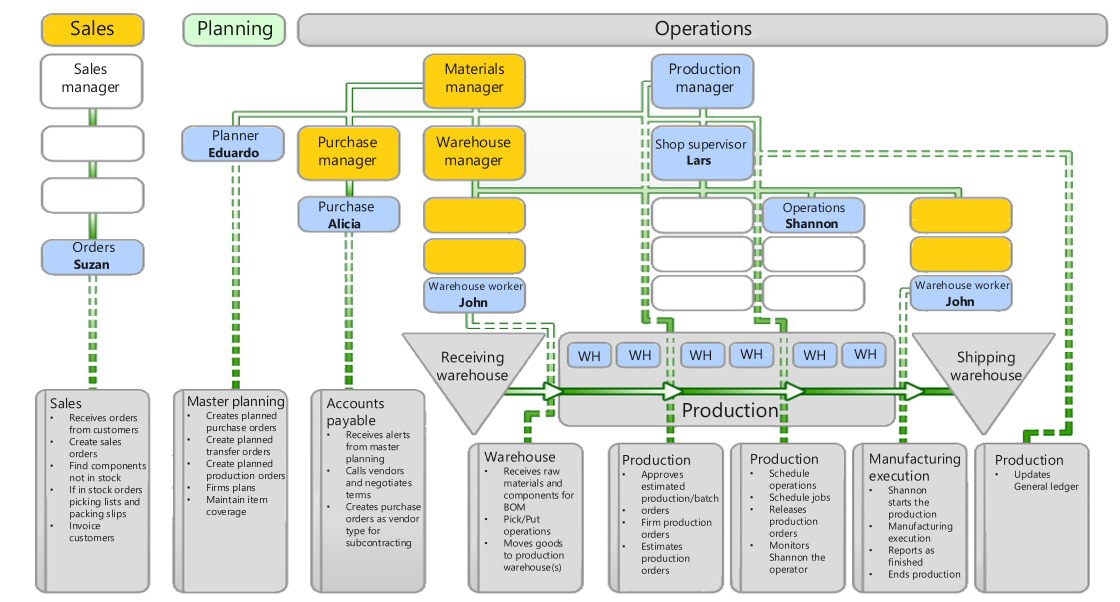Production control
The production of products, a process that is also known as the production life cycle, follows specific steps that are required to complete the manufacturing of an item. The life cycle begins with the creation of the production order, batch order, or kanban. It ends with a finished, manufactured item that is ready for either a customer or another phase of production. Each step in the life cycle requires different kinds of information to complete the process. As each step is completed, the production order, batch order, or kanban shows a change in the production status.
Different types of products require different manufacturing processes.
The Production control module is linked to other modules, such as Product information management, Inventory management, General ledger, Warehouse management, Project accounting, and Organization administration. This integration supports the information flow that is required to complete the manufacturing of a finished item.
The production process is typically influenced by the cost accounting and inventory valuation methods that are chosen for a specific production process. Supply Chain Management supports both actual cost (first in, first out (FIFO); last in, first out (LIFO); moving average; and periodic weighted average) and standard cost methods. Lean manufacturing is implemented based on the backflush costing principle.
The choice of the cost measurement methods also defines the requirements for reporting about material and resource consumption during the production process. Typically, actual cost methods require accurate reporting on the job level, whereas periodic costing methods allow for less granular reporting of material and resource consumption.
For more information, see the Get started with production control in Dynamics 365 Supply Chain Management module.
